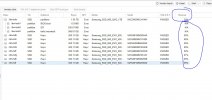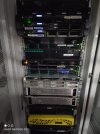Makes no sense for PVE, you don't need the speed for the OS. Once booted, there is not a lot of I/O requirementsNowadays dell gives option to separate operating system on NVMe with raid they call it boss
Why on earth would you not want to run on RAID1 in such a setup for a customer.I want to for client to buy c/m and use it as they want
As I said, I'd go with a multi-tier-setup with ZFS as described in #4.



